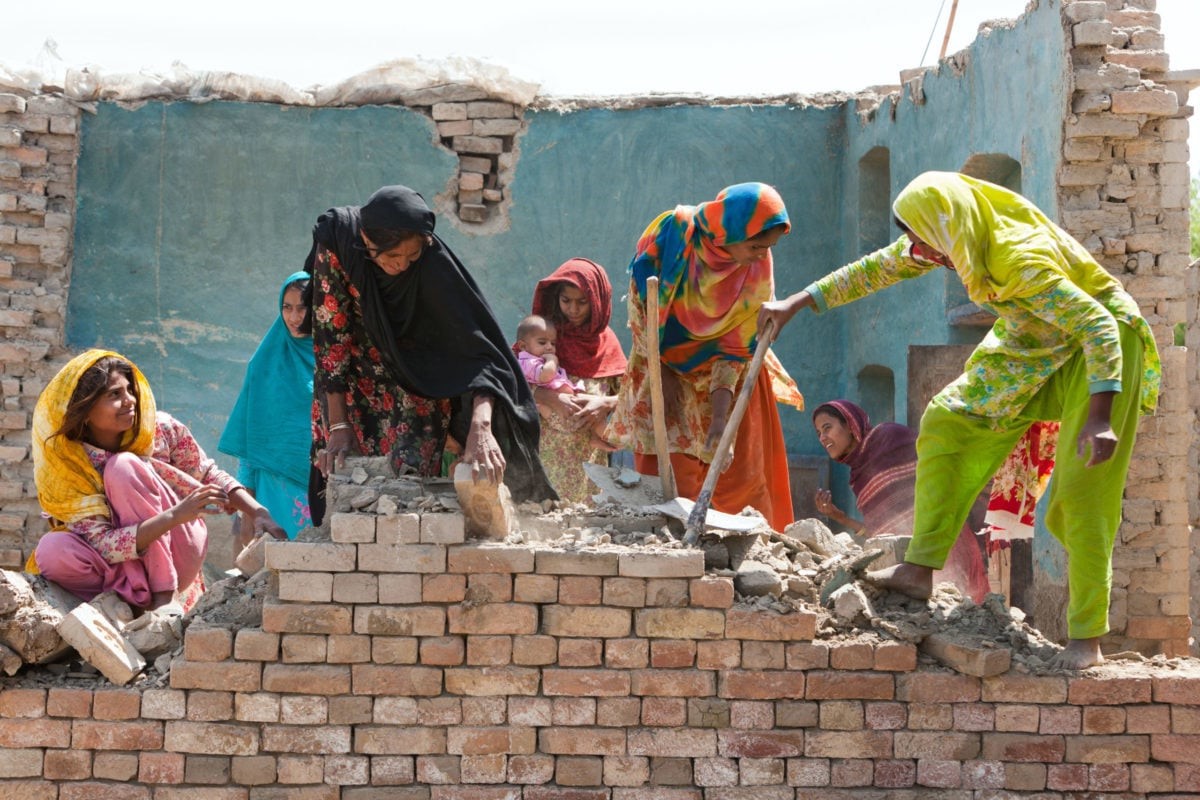Gendered Consequences of Climate Change: Impacts of
Climate Change on Women and Girls
By Tahir Hasnain Shah
Climate change is not a distant threat but an urgent crisis, and its consequences are being felt worldwide. In Pakistan, a country highly vulnerable to the effects of a changing climate, the impact is particularly pronounced. While climate change affects everyone, it disproportionately affects women and girls, exacerbating existing gender inequalities and vulnerabilities. This article delves into the unique challenges and hardships faced by women and girls in Pakistan as a result of climate change.
-
Increased Water Scarcity:
Pakistan’s water resources are under immense stress due to climate change. Irregular rainfall patterns, glacial melt, and the contamination of water sources all contribute to growing water scarcity. Women and girls, who often bear the responsibility of fetching water for their families, find themselves burdened with longer and more arduous journeys to secure this essential resource. This not only impacts their health but also limits their time for education and income-generating activities.
-
Food Insecurity:
Agriculture is a vital sector in Pakistan, and women play a crucial role in food production, from planting and harvesting to processing and distribution. However, changing weather patterns, such as unpredictable monsoons and prolonged droughts, affect crop yields and food production. Women’s livelihoods are thus jeopardized, as they grapple with the challenge of providing enough food for their families.
-
Displacement and Vulnerability:
Climate-induced disasters, such as floods and landslides, often lead to forced displacement. Women and girls are particularly vulnerable during such times, facing heightened risks of sexual and gender-based violence. Living in temporary shelters or refugee camps, they lack privacy, security, and access to healthcare, making them susceptible to exploitation and abuse.
-
Health Risks:
The health of women and girls is jeopardized by climate change in numerous ways. Rising temperatures can lead to heat-related illnesses, while erratic weather patterns can increase the prevalence of vector-borne diseases. Additionally, women’s reproductive health may be compromised, as climate-induced stress can affect menstrual cycles and pregnancy outcomes.
-
Limited Economic Opportunities:
Women in Pakistan often have limited access to education and economic opportunities. Climate change exacerbates these gender disparities, limiting women’s ability to adapt to changing conditions. Lack of access to credit, technology, and land can hinder their participation in climate-resilient livelihoods.
-
Social and Cultural Barriers:
Traditional gender norms and cultural practices in Pakistan can exacerbate the effects of climate change on women and girls. For example, women’s mobility is often restricted, which can hinder their ability to access information, resources, and support during extreme weather events.
Addressing the Challenges:
To mitigate the impacts of climate change on women and girls in Pakistan, several strategies can be employed:
- Gender-Sensitive Climate Policies: Climate policies and programs must incorporate a gender perspective. Recognizing the specific vulnerabilities and capacities of women and girls is essential for effective climate adaptation and mitigation.
- Women’s Empowerment: Promote women’s empowerment through education and economic opportunities. When women are economically independent and have access to resources, they are better equipped to cope with the effects of climate change.
- Healthcare and Education: Ensure women and girls have access to healthcare, education, and information about climate change and disaster preparedness.
- Data Collection and Research: Conduct research to understand the intersection of climate change and gender disparities in Pakistan, enabling evidence-based policy decisions.
- International Collaboration: Collaborate with international organizations and countries to share knowledge and best practices for addressing gender-specific climate challenges.
In conclusion, the impacts of climate change on women and girls in Pakistan are deeply intertwined with pre-existing gender inequalities and vulnerabilities. Addressing these issues requires a comprehensive approach that integrates gender considerations into climate policies and fosters women’s empowerment. By doing so, Pakistan can strive for a more resilient and equitable society in the face of a changing climate, ensuring that women and girls have the support and resources they need to thrive in an uncertain future.
________________________
(The writer is a seasoned researcher and development practitioner currently working as Senior Program Manager at Legal Rights Forum (LRF), a rights based advocacy NGO in Pakistan. He can be reached at tahir.hasnain@lrfpk.org)



